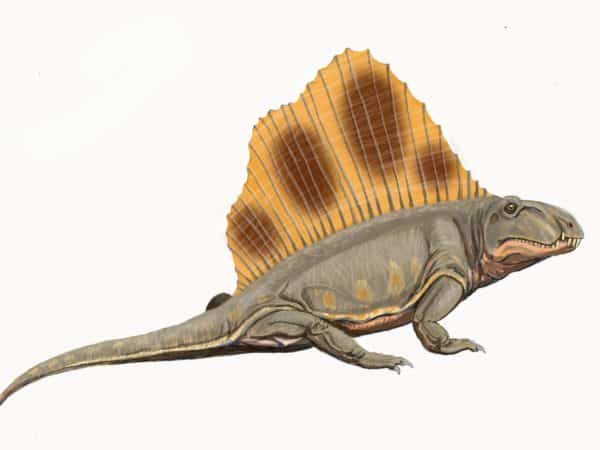
 A recent study used modern imaging techniques to re-classify Canada’s second oldest vertebrate fossil because the famous PEI dinosaur is not a dinosaur at all.
A recent study used modern imaging techniques to re-classify Canada’s second oldest vertebrate fossil because the famous PEI dinosaur is not a dinosaur at all.
The new research published November 23rd in the Canadian Journal of Earth Sciences, claims that the fossil known as Bathygnathus borealis, discovered in French River, Prince Edward Island, in 1845, should actually be called a Dimetrodon, that lizard-looking carnivore with the sail on its back (who we’ve always lumped in with the dinosaurs but is in fact closer in nature to a mammal and predates the dinosaurs by some 50 million years). Up until now, Dimetrodons have been found in parts of the United States and in Germany. The PEI dinosaur, err mammal, would mark the first time one has been identified in Canada.
A team of researchers from the University of Toronto, Carleton University and the Royal Ontario Museum used a CT scan of the PEI fossil (a piece of its upper jaw and teeth) to confirm the match between it and other fossils currently known as Dimetrodons.
“It’s really exciting to discover that the detailed anatomy of the teeth has finally allowed us to identify precisely this important Canadian fossil,” says Kristin Brink, lead author of the study.
Manospondylus gigas
While Alberta has long reigned as the old bones capital of Canada, the Atlantic Provinces have produced their fair share of fossils, too. Recent discoveries in Nova Scotia have unearthed some of Canada’s oldest dinosaur bones embedded within the cliffs along the Bay of Fundy.
But it seems that correctly identifying the PEI fossil is only half the battle, as now the fight over naming rights begins. Should PEI’s Bathygnathus borealis be renamed a Dimetrodon or should it be the other way around? In fact, the rules of the taxonomy game say that the earlier the discovery the more right to the naming – and since the PEI dinosaur find was decades earlier than the Dimetrodon discoveries down south in Oklahoma and Texas, by rights all those US Dimetrodon should now take on the Bathygnathus borealis name.
Well, maybe not.
“What we’re hoping will happen is the priority will be reversed so we can keep dimetrodon as a valid name,” Brink told CBC News. “Just because it’s so well known among the public and other scientists as well.”
Others seem to agree with the appeal to popularity. Ted Daeschler of Drexel University says, “If one of the names is really entrenched – even if it’s the newer one – we’ll stick with it.”
Not so surprising, as this news adds to a long list of paleontology re-branding efforts, including the recent push to reinstate the Brontosaurus, who had lost its name more than a century ago (What, you’ve still been calling it a Brontosaurus all these years?) due to a similar squabble over historical naming rights. Earlier this year, scientists from the New University of Lisbon in Portugal favorably argued that anatomical traits of the Apatosaurus, a dinosaur similar to the Bronto but with an earlier date of discovery, were in fact distinguishable from those of the Brontosaurus.
Even the mighty Tyrannosaurus rex has met with his share of image problems, as recently as the year 2000 when the lesser known Manospondylus gigas took a run at top spot in the dino hierarchy. Fortuntately, the International Commission on Zoological Nomenclature stepped in and sided in favour of T. rex, Hollywood, and dinosaur obsessed children everywhere.
Leave a Reply
You must be logged in to post a comment.




 Share
Share Tweet
Tweet Share
Share




Comment